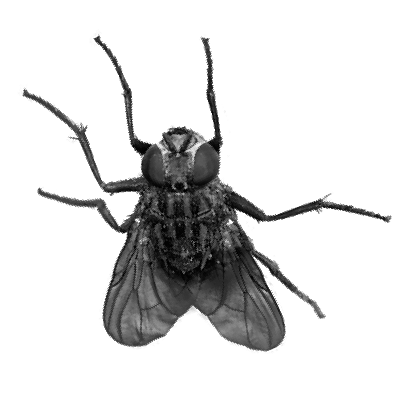
Stomoxys calcitrans (Linnaeus)
Color: Grayish-colored bodies
The identity of the Stable Fly is sometimes confused with the House Fly.
Both males and females use this proboscis to pierce the skin of a host and suck blood. The bite is painful.
The STABLE FLY can be easily distinguished from other common domestic flies by the long, pointed proboscis which extends in front of the head.
l and outdoor human activity may be curtailed when these flies are numerous.
The Stable fly ingests liquids by piercing (bites), while the house fly has a sponging mouth part.
Size: About 1/4 inch long
Manufacturer Recommended Products And Treatment For Stable fly
Pests need food, water, and shelter. Often the problem may be solved just by removing these key items. Before even thinking about chemical pest control, it is important to be aware of
| Conducive Condition | Recommendation | |
| 1 | Tree branches on house | Keep tree branches away from house to reduce pest access |
| 2 | Firewood next to foundation | Keep firewood away from house to reduce pest harborage |
| 3 | Debris on crawlspace/next to foundation | Remove wood debris to reduce termite ha rborage area |
| 4 | Excessive plant cover, stump, etc. | Providing spacing between plant cover and structure |
| 5 | Soil above the foundation Ii ne | Keep soil below top of foundation to reduce harbo rage areas |
| 6 | Wood-to-ground contact | Keep soil from touching wood to eliminate termite access |
| 7 | Debris on roof/full gutter | Keep gutter & roof free of debris to reduce insect harborage |
| 8 | Standi ng water near/under structure | Eli minate standing water to reduce pest harbo rage |
| 9 | Mo isture problem under structure | Increase ventilation to reduce pest harbo rage area |
| 10 | Openi ngs at plumbi ng & electronics | Seal opening to reduce pest access |
| 11 | Excessive gaps at windows/doors | Seal gaps to reduce pest access |
| 12 | Lea ky plumb ing fixtures | Repair to reduce moisture for pests |
| 13 | Keep garbage cans covered | Covered to reduce attraction of insects of vertebrate pests |
| 14 | Mo isture damage wood | Repair rotten or damaged wood to reduce insect harborage |
| 15 | Grocery bags stored improperly | Seal paper sacks in containers to reduce i nsect ha rborage areas |
| 16 | Pet food unsealed or left out | Keep pet food in sealed containers and unavailable to pests |
| 17 | Excessive storage conditions | Keep storage areas uncluttered and manageable |
| 18 | Debris below kick plates | Remove kick plates to reduce rodent harborage |
35 products





























